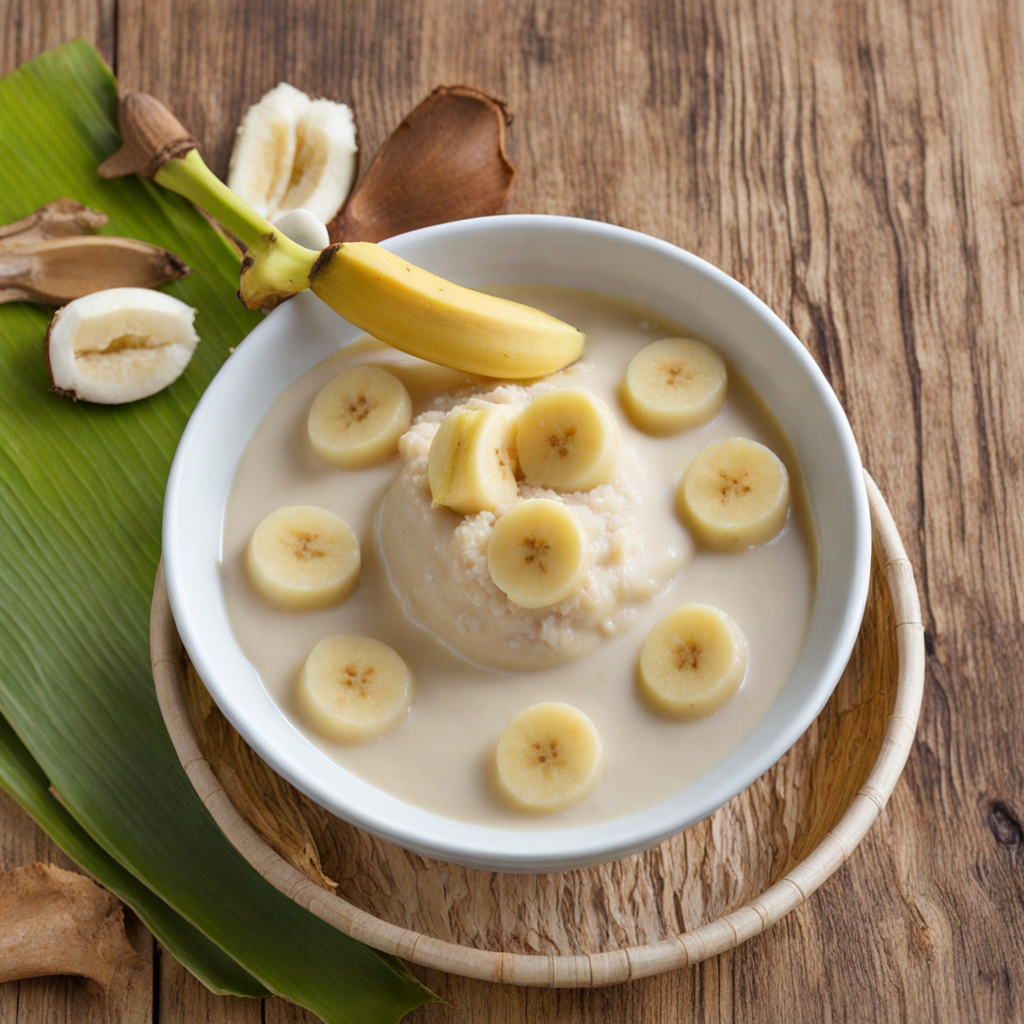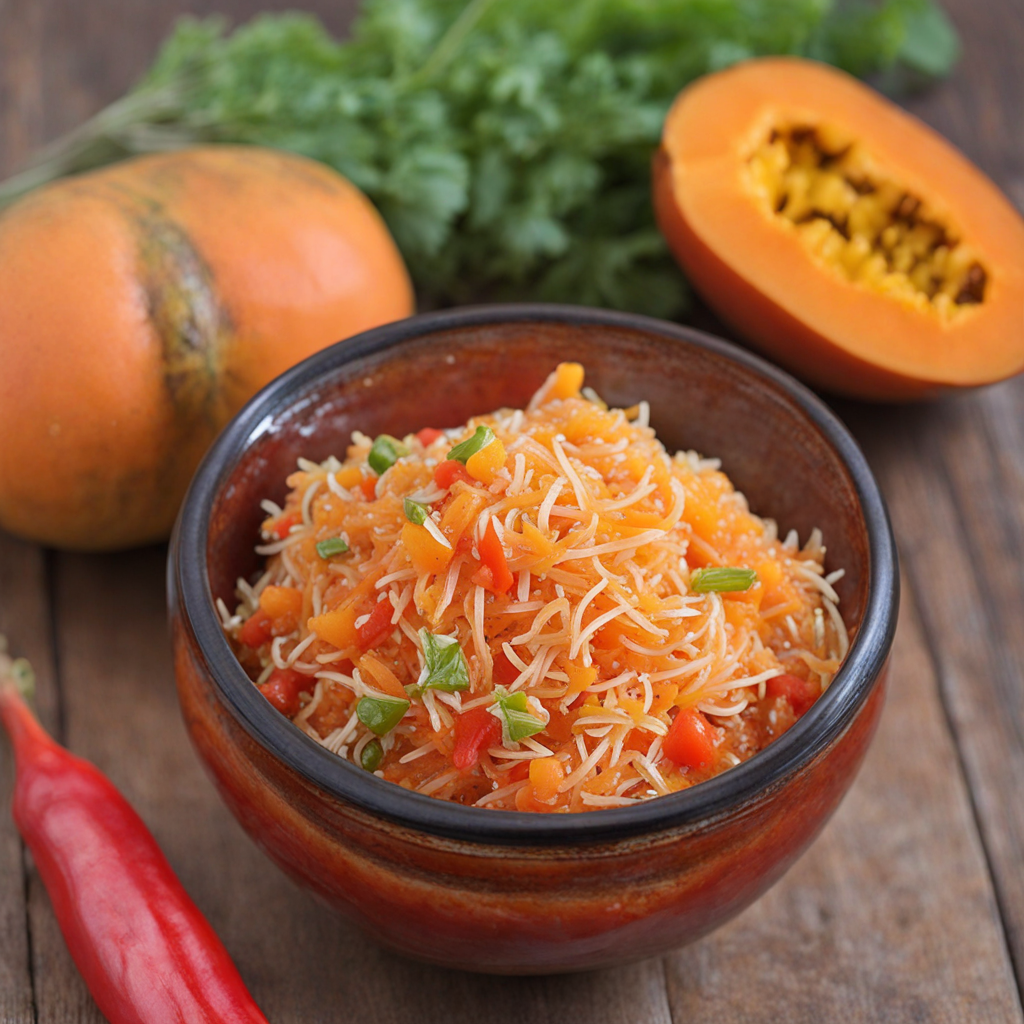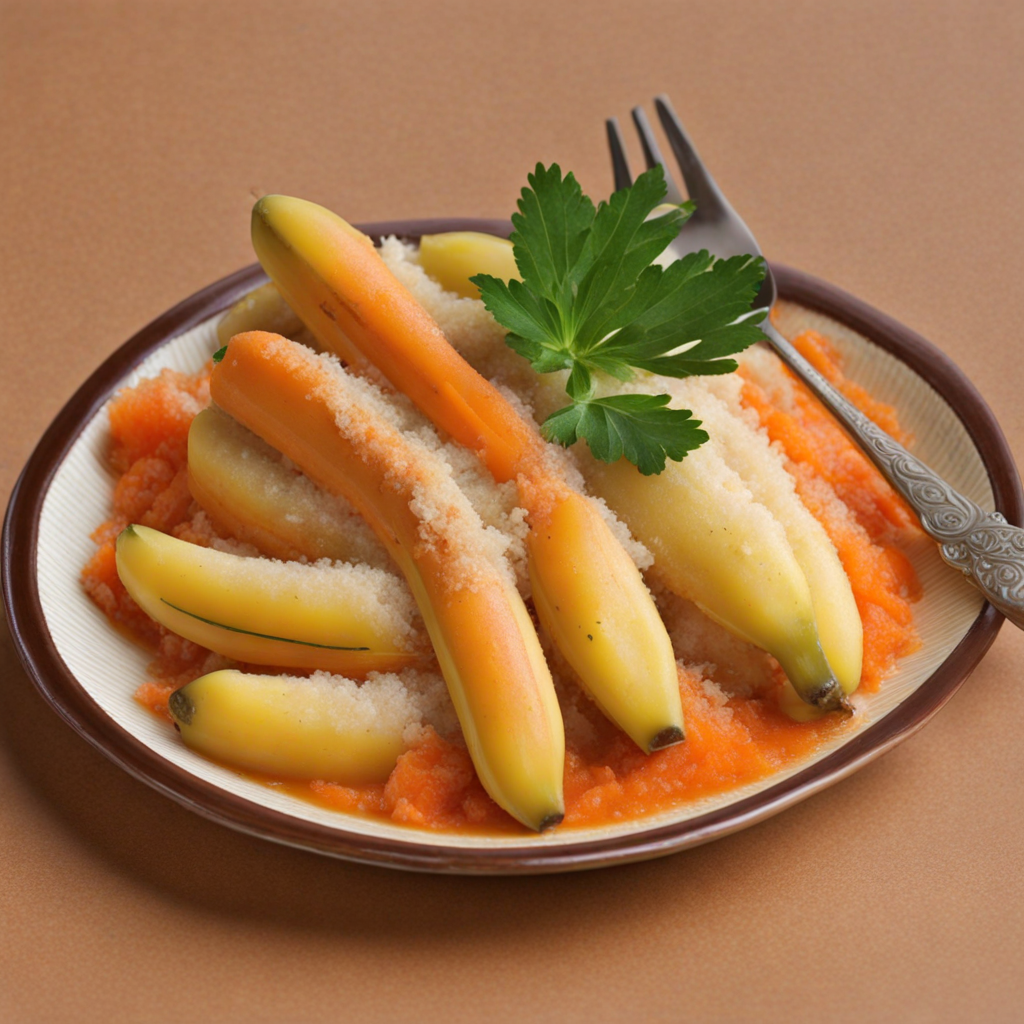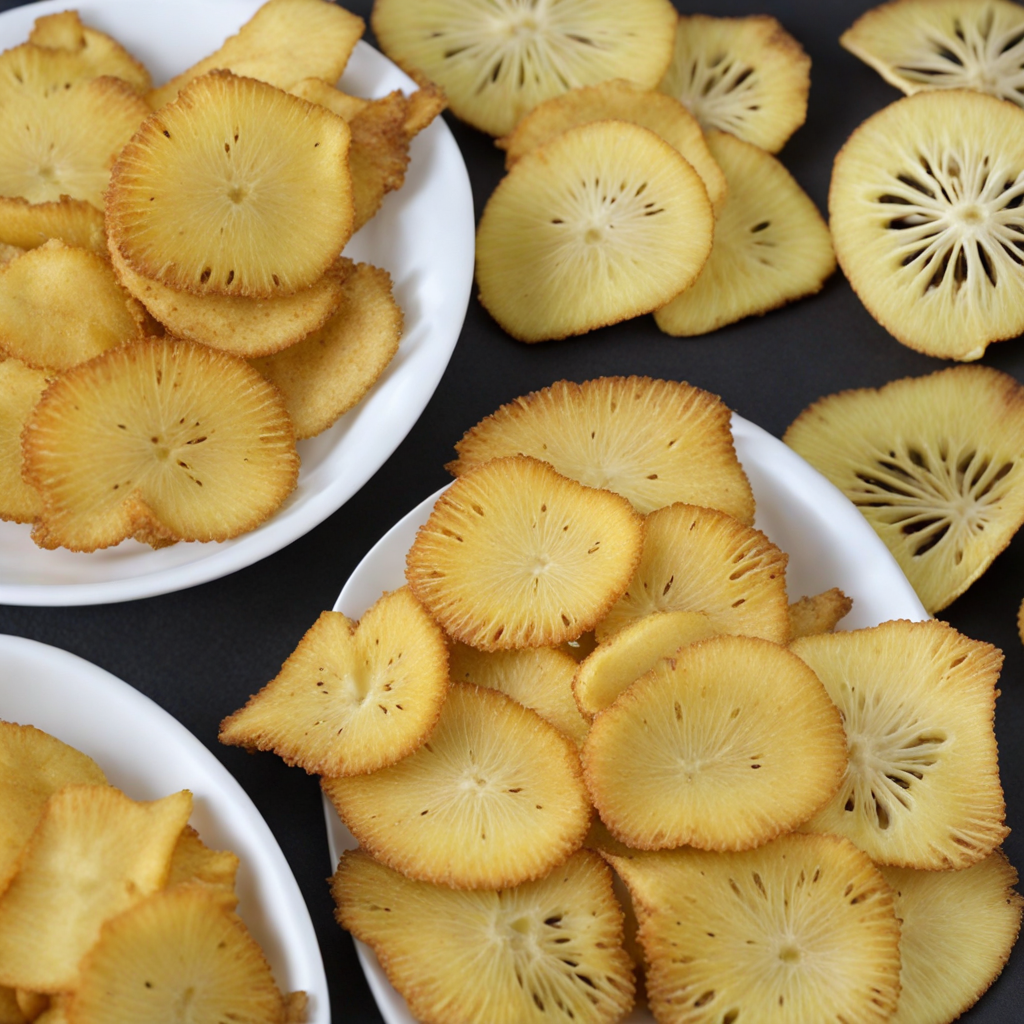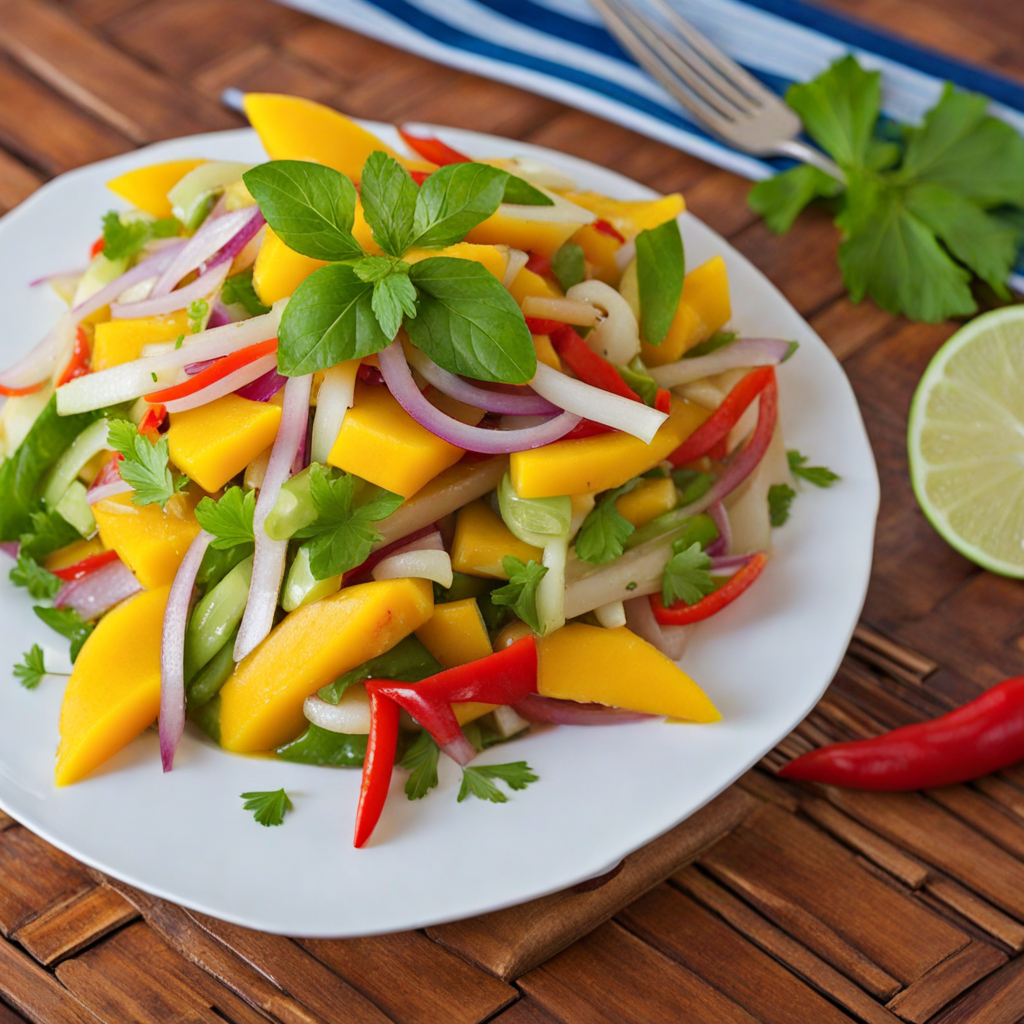Banana in Coconut Milk
Banana in Coconut Milk is a delightful dessert from the enchanting islands of Seychelles, where the vibrant flavors of tropical ingredients come together in a harmonious blend. At its core, this dish features ripe bananas, which are gently cooked until they become tender and infused with the rich, creamy essence of coconut milk. The sweetness of the bananas is beautifully complemented by the velvety texture of the coconut, creating a dish that is both satisfying and refreshing. Each bite transports you to the sun-kissed shores of the Indian Ocean, celebrating the island's bountiful produce. The preparation of Banana in Coconut Milk is incredibly simple, yet the result is utterly sublime. The bananas are often sliced and simmered in a luscious mixture of coconut milk, sugar, and sometimes a hint of vanilla or a sprinkle of cinnamon for added warmth. This gentle cooking process allows the ingredients to meld together, resulting in a sweet, fragrant sauce that envelops the bananas. The dish can be enjoyed warm or chilled, making it a versatile treat for any occasion, whether it's a casual family dinner or a festive gathering. Serving ideas for this delightful dessert are as varied as the islands themselves. It can be enjoyed on its own, garnished with toasted coconut flakes or a sprinkle of nuts for added texture. Alternatively, it can be served alongside a scoop of vanilla ice cream, creating a delightful contrast between warm and cold. Banana in Coconut Milk is more than just a dessert; it's a celebration of the Seychelles’ culinary heritage, inviting you to savor the tropical flavors that define this idyllic paradise.
How It Became This Dish
The Engaging History of Bannann dan Lel: A Culinary Gem of Seychelles #### Origins and Ingredients Bannann dan Lel, a traditional dish from the Seychelles, is a delightful representation of the archipelago's rich cultural tapestry. The name translates to "banana in the leaf," which serves as a fitting description of this beloved delicacy. Its primary ingredient is the banana, specifically the sweet, ripe variety that grows abundantly in the tropical climate of the Seychelles. The dish typically incorporates coconut and sugar, creating a harmonious blend of flavors that is both sweet and comforting. The origins of Bannann dan Lel can be traced back to the early inhabitants of the Seychelles. The islands were first settled by the French in the 18th century, but before that, they were home to various migratory groups, including the Malagasy people from Madagascar and the Austronesians. These early settlers brought with them agricultural practices and culinary traditions that laid the groundwork for Seychelles' unique food culture. Bananas, along with other tropical fruits, quickly became staples in the local diet due to their availability and versatility. #### Cultural Significance Bannann dan Lel is more than just a dish; it is a reflection of the Seychellois way of life. The preparation of this dessert often involves communal gatherings, where families come together to cook and share meals. This aspect of shared cooking underscores the importance of community and family in Seychellois culture. The dish is often served during celebrations, festivals, and special occasions, symbolizing joy and togetherness. The use of banana leaves in the preparation of Bannann dan Lel is also significant. Traditionally, the leaves are used to wrap the mixture of mashed bananas, coconut, and sugar before steaming. This method not only adds a subtle earthy flavor to the dish but also exemplifies the sustainable practices employed by the Seychellois. Utilizing local resources, such as banana leaves, reflects a deep respect for nature and the importance of preserving the environment. #### Development Over Time As Seychelles evolved through colonial periods and the influence of various cultures, so too did the dish of Bannann dan Lel. The French colonial presence introduced culinary techniques and ingredients that enriched the local cuisine. For instance, the incorporation of sugarcane, which was cultivated extensively during the colonial era, enhanced the sweetness of Bannann dan Lel, making it a more indulgent treat. With the arrival of British colonial rule in the 19th century, Seychelles saw an influx of new flavors and cooking styles. This period also marked the introduction of Indian and African culinary influences, further diversifying the local food scene. Although Bannann dan Lel remained largely unchanged in its core ingredients and preparation, the cultural exchanges that took place during these times contributed to the dish's evolution and its place within the broader context of Seychellois cuisine. Today, Bannann dan Lel has gained popularity beyond the shores of Seychelles. As tourism in the islands flourished in the late 20th century, visitors were introduced to the local culinary delights, with Bannann dan Lel often being touted as a must-try dish. This exposure has led to a renewed interest in traditional Seychellois recipes, with chefs experimenting to create modern interpretations while still honoring the dish's roots. #### Modern Interpretations and Global Influence In recent years, the culinary landscape of Seychelles has witnessed a fusion of traditional and contemporary cooking styles. Chefs in local restaurants have begun to experiment with Bannann dan Lel, incorporating unique twists that reflect global influences. For instance, some chefs have introduced spices such as cinnamon or vanilla to elevate the flavor profile, while others have paired the dish with exotic ingredients like passion fruit or mango, creating a delightful interplay of tastes. The rise of food tourism has also led to the popularization of cooking classes and culinary tours in Seychelles, where visitors can learn how to make Bannann dan Lel from local chefs. This experiential approach not only allows tourists to connect with the culture but also helps preserve the traditional methods of preparation. The passing down of recipes and cooking techniques from one generation to the next is vital in maintaining the authenticity of Bannann dan Lel. #### The Importance of Preservation As with many traditional dishes worldwide, the preservation of Bannann dan Lel is increasingly vital in the face of globalization and changing culinary habits. The younger generation in Seychelles, while still appreciating their culinary heritage, often gravitates towards fast food and international cuisine. This shift poses a challenge to the continuation of traditional practices, prompting local organizations and culinary enthusiasts to advocate for the importance of maintaining traditional dishes like Bannann dan Lel. Efforts to promote local ingredients and recipes have gained traction, with initiatives aiming to educate the public on the significance of Seychelles’ culinary heritage. Events such as food festivals celebrate local cuisine and encourage the community to engage with their food culture. Bannann dan Lel often takes center stage at these events, showcasing its enduring popularity and cultural relevance. #### Conclusion Bannann dan Lel stands as a testament to the rich history and cultural significance of Seychelles. It embodies the spirit of community, sustainability, and the blending of diverse culinary traditions. As the world continues to evolve, the dish remains a cherished part of Seychellois identity, bridging the past with the present and inspiring future generations to honor their culinary roots. In a globalized world, where flavors and ingredients travel across borders, Bannann dan Lel serves as a reminder of the importance of celebrating local heritage. Whether enjoyed at a family gathering, a festive celebration, or a bustling restaurant catering to tourists, this deceptively simple dish continues to enchant palates, evoking the warmth of Seychellois culture and the vibrant landscapes of the islands. As we savor the complex flavors of Bannann dan Lel, we partake in a shared history that transcends time and place, connecting people through the universal language of food.
You may like
Discover local flavors from Seychelles


